US troop levels in Iraq reach all-time high
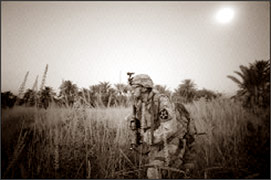
A US soldier conducts a night patrol with three platoons |
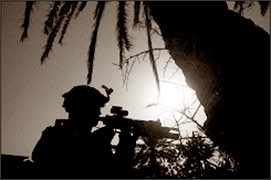
A US soldier patrols in the village of Sweb |
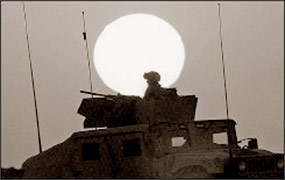
Marines conducting a mounted combat patrol |
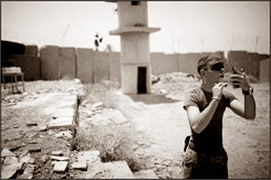
A US soldier shaves in the Buhriz Iraq Police station |
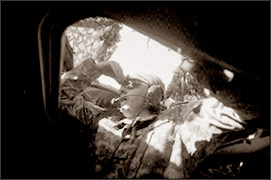
A US soldier patrols in a Stryker in the streets of Buhriz |
WASHINGTON (AFP) - US troop levels in Iraq have hit an all-time high
with overlapping unit rotations pushing the total number up to nearly
162,000, the Pentagon said.
Pentagon spokesman Bryan Whitman said the previous high in the more
than four-year-old war was about 161,000 troops in January 2005 when
national elections were held for the first time.
But Whitman, who put the current number of US troops at "nearly
162,000," said the latest hike was not a move to further beef up the
"surge" force that has been deployed to Iraq over the course of the year
to halt a slide toward civil war." There is no change to the level
effort and combat power that we are projecting into Iraq. The 20 combat
brigade and the associated combat services and combat support that are
required to sustain that level remains constant," he said.
"What has changed today with the numbers spiking a little bit is due
to just the normal flow of forces in and out," he said.
The 2nd Stryker Cavalry Regiment from Vilseck, Germany and a combat
aviation brigade are deploying into Iraq, while two combat aviation
brigades are on their way out, the Pentagon said.
Whitman said a combat brigade plus support units are rotating into
and out of Iraq in any given month. The movements typically overlap by a
couple of weeks so that arriving units have time to learn the ropes from
departing units and ease into their new roles. US commanders are nearing
a key decision point, however, over whether and how long to sustain the
higher level of forces.
General David Petraeus, the US commander in Iraq, and US Ambassador
to Iraq Ryan Crocker are supposed to deliver their assessment to
Congress by mid-September. The US buildup, which began in February and
peaked in June, added five combat brigades and other support units to
the US ground force in Iraq after an Iraqi-led operation failed to
secure Baghdad.
The idea has been to put a lid on sectarian violence to give Iraqi
leaders time to get national reconciliation efforts going.
But the main Sunni block last week walked away from the "national
unity" government led by Prime Minister Nuri al-Maliki and four more
cabinet members from a non sectarian party joined them Monday. The
parliament recessed for vacation last week without passing any
legislation to further reconciliation goals.
US commanders now say it will take at least a couple more years for
the Iraqi security forces to be capable of taking over from US troops.
Meanwhile, insurgents continue to inflict casualties on US troops.
The US military on Tuesday reported the deaths of four more US
soldiers, raising the US death toll to 3,674. At least 19 US troops have
been killed so far this month.
Three of the soldiers died Saturday in a roadside bombing of convoy
south of Baghdad, and the fourth was killed Monday by an armor piercing
bomb that US officials say are being supplied from Iran. On Sunday, US
Defense Secretary Robert Gates said the United States envisions a long
term residual US military presence in Iraq after a drawdown of US
troops. Gates would say only that a reduction of US troops this year was
"a possibility."
The extended deployments, meanwhile, have severely strained the US
military and analysts say the surge cannot be sustained beyond April
without either extending tours of duty or calling up brigades that have
been home less than a year.
AFP
|
